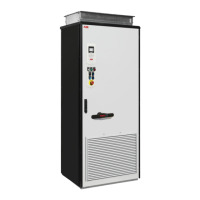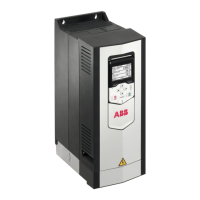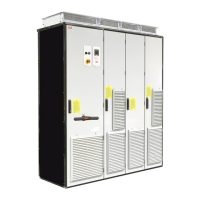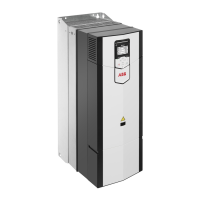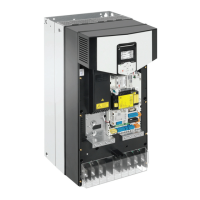Planning – basics 25
Example 1
Common DC system: The DC links of three converters ACS880-01-169A-3 (frame size
R7), ACS880-01-246A-3 (frame size R8) and ACS880-01-430A-3 (frame size R9) are
connected together. The main supply voltage is 400 V.
Questions:
Is the charging capacity of the largest drive sufficient for the whole common DC
system? Can you connect only the largest drive to the AC power line and leave the others
unconnected?
Calculations:
The total charging energy of the capacitors is:
E
tot
= 1/2 × (3800 μF + 5600 μF + 8800 μF) × (1.35 × 400 V)
2
× 10
-6
= 2653 J
The charging capacity of the ACS880-01-430A-3 (frame size R9) is sufficient since:
E
r
= 5600 J > 2653 J (E
tot
)
Conclusion: It is sufficient to connect only the largest drive to the AC power line.
Example 2
Common DC system: The DC links of two ACS880-01-240A-5 converters (frame size R8)
and three ACS880-01-361A-5 converters (frame size R9) are connected together. The
main supply voltage is 500 V.
Question:
How many frame size R9 drives you must connect to the AC power line to
supply the charging energy for the whole system?
Calculations:
The total charging energy of the DC link capacitors is:
E
tot
= 1/2 × (2 ×5600 μF + 3 ×8800 μF) × (1.35 ×500 V)
2
×10
-6
= 8566 J
The charging capacity of the ACS880-01-361A-5 (frame size R9):
One frame size R9 drive: E
r
= 5600 J < 8566 J (E
tot
)
Two frame size R9 drives: 2 × E
r
= 112 000 J > 8566 J (E
tot
)
Conclusion: It is sufficient to connect two frame size R9 drives to the AC power line.
Handling the surplus energy
Background
When a motor brakes, it generates energy to the DC link. If the other drives in the common
DC system cannot use the energy at the same time, the DC link voltage starts to rise. The
capacitors in the DC link can absorb a small energy pulse. If that is not enough and the
voltage keeps rising, you must convey the surplus energy to the braking chopper and
resistors, or to the AC power line. For the latter case you need a special type of drive, a
regenerative drive. For more information of the electrical braking, see Technical guide
No. 8 Electrical braking in ABB Drives - Technical Guide Book (3AFE64514482 [English]).
This sections contains:
• instructions in defining the energy absorbing capacity of the common DC link
• instructions in dimensioning brake choppers and resistors.
This section does not contain instructions in selecting the regenerative drive.
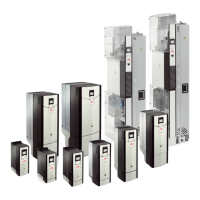
